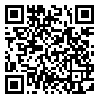Volume 13, Issue 2 (2025)
Health Educ Health Promot 2025, 13(2): 1001-1033 |
Back to browse issues page
Download citation:
BibTeX | RIS | EndNote | Medlars | ProCite | Reference Manager | RefWorks
Send citation to:



BibTeX | RIS | EndNote | Medlars | ProCite | Reference Manager | RefWorks
Send citation to:
Astuti Tanjung M F, Siringoringo E E R, Sinaga M. The Role of Technology in Maternal Health Education to Improve Childbirth. Health Educ Health Promot 2025; 13 (2) :1001-1033
URL: http://hehp.modares.ac.ir/article-5-80098-en.html
URL: http://hehp.modares.ac.ir/article-5-80098-en.html
1- , menifuzi88@gmail.com
Abstract: (198 Views)
Aims: This study aims to analyze the role of technology in maternal health education to improve maternal readiness, measure its effectiveness in terms of knowledge, mental and physical readiness, and identify challenges and implementation strategies.
Instrument & Methods: The quantitative research used Partial Least Squares Structural Equation Modeling (PLS-SEM) with a sample of 99 pregnant women at the Umar Damanik Health Center, Tanjung Balai. Sampling was done using the Slovin formula (5% margin of error). Data was collected through valid and reliable questionnaires, analyzed with SmartPLS to test construct reliability (Cronbach's Alpha, Composite Reliability), convergent validity (Average Variance Extracted), and hypothesis test (bootstrapping).
Findings: All constructs met the reliability and validity criteria (Cronbach’s Alpha >0.7; AVE >0.5). Technology significantly influenced childbirth readiness (R²=0.717–0.899; p<0.05). Mobile health applications provided interactive information access, IoT facilitated real-time monitoring, streaming platforms expanded educational resources, and telemedicine increased access to health consultations. The PLS-SEM model explained 84.1% of the data variability (R² Adjusted).
Conclusion: Technology effectively improves childbirth readiness through accessible, interactive, and personalized education. Key challenges include limited access to technology, digital literacy, and validity of information. Implementation strategies need to focus on technology infrastructure, digital literacy training, and collaboration with health workers to optimize benefits.
Instrument & Methods: The quantitative research used Partial Least Squares Structural Equation Modeling (PLS-SEM) with a sample of 99 pregnant women at the Umar Damanik Health Center, Tanjung Balai. Sampling was done using the Slovin formula (5% margin of error). Data was collected through valid and reliable questionnaires, analyzed with SmartPLS to test construct reliability (Cronbach's Alpha, Composite Reliability), convergent validity (Average Variance Extracted), and hypothesis test (bootstrapping).
Findings: All constructs met the reliability and validity criteria (Cronbach’s Alpha >0.7; AVE >0.5). Technology significantly influenced childbirth readiness (R²=0.717–0.899; p<0.05). Mobile health applications provided interactive information access, IoT facilitated real-time monitoring, streaming platforms expanded educational resources, and telemedicine increased access to health consultations. The PLS-SEM model explained 84.1% of the data variability (R² Adjusted).
Conclusion: Technology effectively improves childbirth readiness through accessible, interactive, and personalized education. Key challenges include limited access to technology, digital literacy, and validity of information. Implementation strategies need to focus on technology infrastructure, digital literacy training, and collaboration with health workers to optimize benefits.
Keywords: Health technology, mobile health applications, Internet of Things (IoT), streaming platforms, telemedicine
Send email to the article author
| Rights and permissions | |
 |
This work is licensed under a Creative Commons Attribution-NonCommercial 4.0 International License. |





